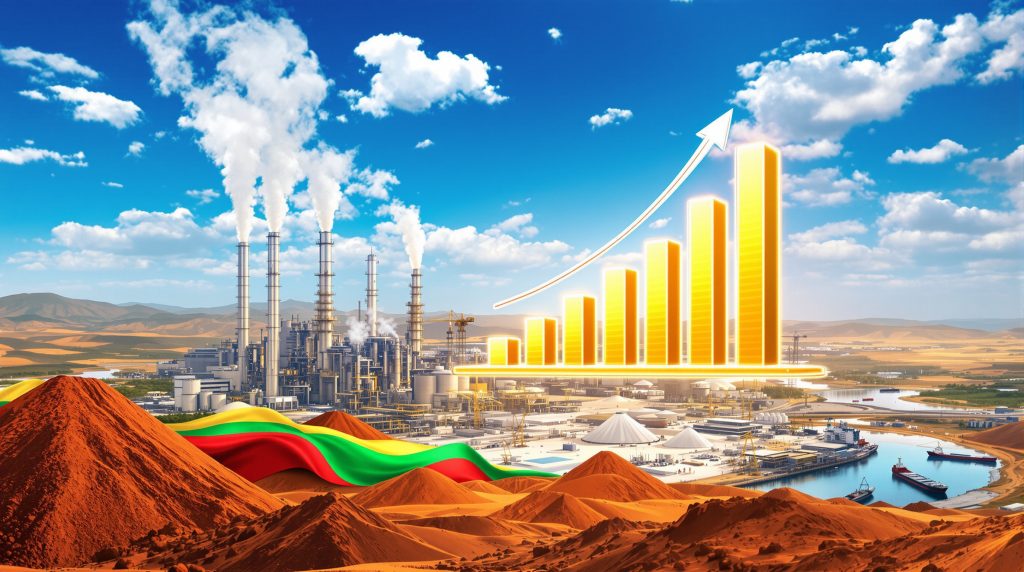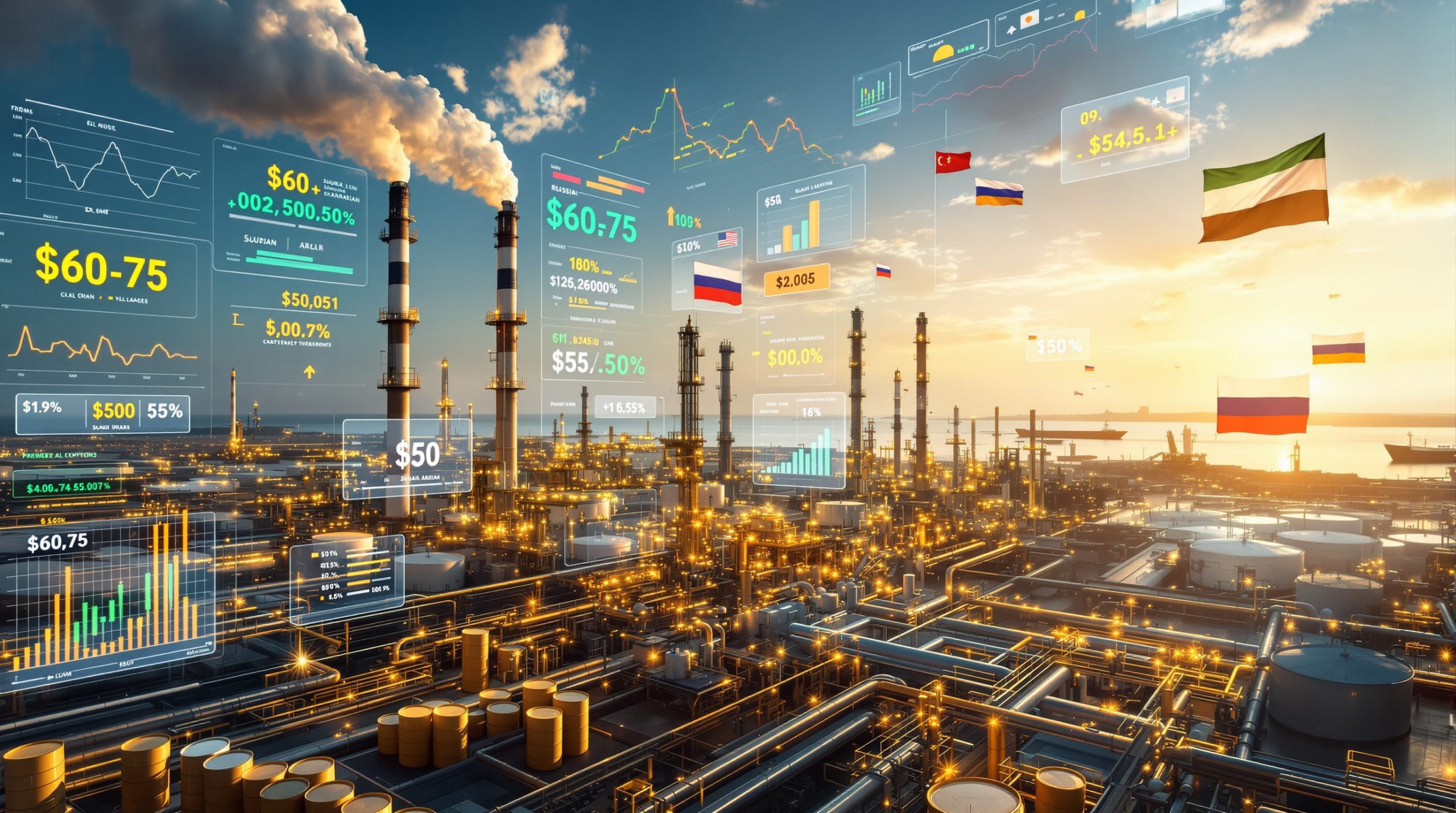What Defines Guinea's Alumina Refinery Expansion Strategy?
Guinea stands at the precipice of a transformative industrial revolution, with Guinea alumina refinery expansion representing a pivotal shift from raw mineral exports to sophisticated processing operations. The West African nation currently operates a single functional alumina processing facility, yet harbours ambitious plans to construct multiple large-scale refineries that could reshape both its economy and global aluminium supply chains.
This strategic pivot represents more than economic policy; it embodies a fundamental rejection of colonial-era extraction models that have persisted for decades. Furthermore, the government's commitment to domestic value-addition reflects growing recognition across mineral-rich African nations that raw commodity exports limit long-term development potential and economic sovereignty.
The transformation connects to broader mineral beneficiation opportunities across Africa, where countries seek to capture greater value from their natural resources. Additionally, this shift aligns with global mining industry evolution trends emphasising sustainable processing and local value addition.
Current Processing Capacity vs. Export Reality
The disparity between Guinea's mineral wealth and processing capacity reveals the magnitude of the transformation ahead. RUSAL's Friguia facility processes approximately 600,000 tonnes annually, representing Guinea's sole operational alumina refinery infrastructure. This modest capacity pales against the nation's bauxite extraction volumes, which flow predominantly to international markets in unprocessed form.
Export patterns underscore this imbalance dramatically. Recent data indicates Guinea exported 39.41 million tonnes of bauxite compared to merely 78,000 tonnes of processed alumina during the third quarter of 2025. This processing ratio of approximately 505:1 demonstrates that virtually all bauxite extraction currently leaves Guinea without value-addition, representing enormous foregone economic opportunity.
The economic implications extend beyond simple volume calculations. Processing bauxite into alumina typically increases export value by 300-400% compared to raw ore sales, suggesting Guinea currently captures only a fraction of its mineral wealth's potential value. This value gap provides compelling justification for the government's aggressive refinery expansion strategy.
Regulatory Framework Driving Expansion
President Mamadi Doumbouya's military-led administration has implemented stringent regulatory mechanisms linking bauxite extraction rights to domestic processing commitments. Mining companies seeking or maintaining bauxite concessions must demonstrate concrete progress toward constructing alumina refineries within specified timeframes.
The enforcement approach combines carrots with sticks. Companies meeting construction deadlines retain mining access and benefit from Guinea's exceptional bauxite quality. Those failing to deliver face concession revocations, export restrictions, and potential legal consequences. This regulatory architecture transforms alumina refinery construction from voluntary corporate social responsibility into mandatory operational requirement.
Emirates Global Aluminium's experience illustrates this enforcement mechanism's real-world application. The company lost its bauxite mining rights in August 2025 after failing to meet alumina refinery construction commitments, despite signing development agreements and conducting preliminary planning. This high-profile enforcement action signals the government's commitment to translating policy intentions into measurable industrial outcomes.
Which Major Alumina Refineries Are Currently Under Development?
Guinea's refinery development pipeline encompasses projects at various stages, from active construction to preliminary negotiations. The diversity of international partners and project scales reflects both the extraordinary opportunity presented by Guinea's bauxite resources and the complex challenges inherent in large-scale industrial development.
SPIC-Guinea Partnership: The Flagship Project
China's State Power Investment Corporation represents the most advanced development initiative in Guinea's alumina processing expansion. SPIC broke ground on a comprehensive refinery complex in Boffa during March 2025, marking the transition from planning to active construction for Guinea's most ambitious processing facility.
The technical specifications demonstrate the project's scale and sophistication:
- Annual processing capacity: 1.2 million tonnes
- Integrated power generation: 250 MW dedicated facility
- Construction timeline: Completion scheduled for late 2027
- Economic impact: More than doubling Guinea's current processing capability
The integrated power infrastructure addresses one of the most critical challenges facing alumina refinery development in Guinea. By constructing dedicated electricity generation alongside processing equipment, SPIC sidesteps dependence on national grid capacity whilst ensuring reliable energy supply for energy-intensive refining operations.
Construction progress appears substantive rather than ceremonial. The March 2025 groundbreaking involved material procurement, workforce mobilisation, and infrastructure development, suggesting genuine capital commitment rather than preliminary planning. This concrete advancement distinguishes the SPIC project from other initiatives that remain in negotiation or feasibility study phases.
Stalled and Uncertain Projects
Several proposed refineries face regulatory uncertainty following recent policy changes and enforcement actions. Emirates Global Aluminium's planned 1 million tonne facility in Boké province exemplifies the complex relationship between policy ambitions and commercial realities.
The EGA situation involves multiple layers of complexity. Despite signing a development term sheet in June 2024, the company's bauxite concession was transferred to state-owned Nimba Mining Company following construction delays. However, the precise status of the planned refinery remains unclear, with negotiations continuing despite the concession transfer.
Additional companies maintain various levels of engagement with Guinean authorities regarding potential refinery development:
- Chinalco: Advanced negotiations for undisclosed capacity facility
- Alteo (France): Advanced discussions regarding processing partnership
- Compagnie des Bauxites de Guinée: Ongoing talks for domestic refinery
- Alcoa: Preliminary discussions about processing investment
Guinea's Alumina Refinery Development Pipeline
| Facility | Annual Capacity | Development Stage | Expected Timeline |
|---|---|---|---|
| Friguia (RUSAL) | 600,000 tonnes | Operational | Current |
| SPIC-Boffa | 1,200,000 tonnes | Under Construction | Late 2027 |
| EGA-Boké | 1,000,000 tonnes | Regulatory Uncertainty | Unknown |
| Global Alumina | 3,300,000 tonnes | Early Planning | Unconfirmed |
| Various Others | 2,000,000 tonnes | Negotiations | 2028-2030 |
How Does Guinea's Strategy Compare to Global Alumina Processing Trends?
Guinea alumina refinery expansion occurs within broader global aluminium supply chain dynamics dominated by Chinese processing capacity and Middle Eastern energy advantages. Understanding these competitive contexts illuminates both the opportunities and constraints facing Guinea's industrial development ambitions.
China's Continued Dominance in Guinea's Supply Chain
Chinese refineries currently process approximately 60% of Guinea's bauxite exports, establishing deep commercial relationships and logistical infrastructure connecting Guinea's mines to Chinese aluminium production. This dependency reflects both Chinese refining capacity and established trade relationships developed over decades.
The scale of Chinese processing involvement extends beyond simple commercial transactions. Chinese companies provide technical expertise, financing mechanisms, and market access that smaller refining nations struggle to match independently. Consequently, this creates structural advantages for Chinese participation in Guinea's refinery development beyond simple cost considerations.
Nevertheless, experts question whether domestic refinery construction will meaningfully reduce Chinese influence over Guinea's mineral sector. Shanghai Metals Market analyst Allison Ju observed that "alumina exports to China may simply replace bauxite exports, maintaining commercial dependency whilst shifting the processing location." This analysis suggests that geographic processing location changes may not automatically translate to economic independence or supply chain diversification.
Strategic Advantages for Downstream Processing
Guinea possesses several competitive advantages that distinguish its potential refinery operations from existing processing centres. Geographic proximity to European and North American markets provides logistical benefits compared to Middle Eastern facilities serving primarily Asian markets.
The technical characteristics of Guinean bauxite create additional advantages. Low-silica composition enables energy-efficient refining processes and higher-purity alumina production compared to high-silica varieties found in other producing regions. In addition, this quality differential translates to reduced processing costs and premium product pricing opportunities.
Guinea's bauxite currently supports approximately 25% of global aluminium output despite minimal domestic processing. This statistic demonstrates both the extraordinary importance of Guinean resources to international aluminium production and the potential economic value currently captured by downstream processors rather than Guinea itself.
What Are the Primary Challenges Facing Refinery Expansion?
Converting ambitious refinery expansion plans into operational industrial facilities requires overcoming substantial infrastructure, technical, and financial obstacles. These challenges explain why despite decades of discussions, Guinea operates only one functional alumina refinery.
Energy Infrastructure Limitations
Mines Minister Bouna Sylla explicitly identified energy infrastructure as the most significant constraint facing refinery development. Alumina processing ranks among the world's most energy-intensive industrial operations, requiring consistent electricity supply for high-temperature chemical processes and materials handling.
Guinea's current national grid capacity cannot support multiple large-scale refineries simultaneously. The government recognises this limitation and actively pursues diversified energy development strategies:
- Hydroelectric expansion: Leveraging Guinea's substantial water resources
- Solar power development: Capitalising on West African solar potential
- Liquefied natural gas imports: Including US-backed LNG import infrastructure
- Dedicated facility power plants: As demonstrated by SPIC's 250 MW facility
The energy challenge extends beyond simple capacity to reliability and cost competitiveness. Refinery operations require uninterrupted power supply, making grid stability as important as total generation capacity. Furthermore, energy costs significantly influence refinery profitability, necessitating competitive electricity pricing to support viable operations.
Industries worldwide are increasingly exploring renewable energy solutions to address these challenges whilst maintaining operational efficiency.
Technical Expertise and Capital Requirements
Modern alumina refineries demand sophisticated engineering knowledge, substantial upfront capital investment, and complex supply chain management capabilities. Guinea lacks indigenous expertise in large-scale refinery design, construction, and operations, necessitating international partnerships and technology transfer agreements.
The capital intensity creates additional hurdles. Individual refinery projects require hundreds of millions of dollars in initial investment before generating revenue. This scale demands access to international capital markets, development finance institutions, or substantial foreign direct investment commitments.
Supply chain complexity adds operational challenges. Refineries require consistent procurement of specialised chemicals, replacement parts, and technical services that may not be readily available within Guinea's domestic market. Establishing reliable international supply relationships becomes critical for sustained operations.
What Economic Impact Could Successful Expansion Deliver?
Successful Guinea alumina refinery expansion could fundamentally transform Guinea's economic structure, employment patterns, and fiscal revenues. The World Bank specifically identified in-country alumina and iron ore processing as potentially transformative for Guinea's overall economic development.
Job Creation and Industrial Development
Domestic alumina processing generates substantially more employment per unit of mineral wealth compared to raw bauxite extraction. Refinery operations require skilled technical workers, maintenance personnel, logistics coordinators, and administrative support staff. Additionally, supporting industries including transportation, equipment maintenance, and professional services experience increased demand.
The employment multiplier effects extend beyond direct refinery jobs. Processing facilities stimulate local economic activity through worker spending, supplier relationships, and infrastructure development. Rural regions hosting refinery construction benefit from temporary employment during construction phases and permanent employment during operations.
Industrial development creates additional benefits through skills development and technology transfer. Workers acquiring refinery operation experience develop transferable technical capabilities applicable to other industrial sectors, supporting broader economic diversification efforts.
Revenue Optimisation Through Value Addition
Processing bauxite into alumina typically increases export value by 300-400% compared to raw ore sales. For Guinea, this value multiplication could generate substantially higher government revenues through corporate taxation, export duties, and economic activity stimulation without increasing bauxite extraction volumes.
The fiscal impact extends beyond simple price differentials. Refinery operations generate ongoing employment income taxation, corporate profit taxation, and indirect economic activity that raw mineral exports cannot match. This sustained revenue generation provides more stable fiscal foundations compared to volatile commodity price exposure.
Value-addition also reduces Guinea's vulnerability to international commodity price fluctuations. While alumina prices remain subject to market forces, processed products generally experience less price volatility than raw materials, providing more predictable revenue streams for both companies and government budgets.
How Does This Expansion Fit Into Africa's Broader Resource Processing Movement?
Guinea participates in a continental trend of resource-rich African nations pursuing domestic value-addition strategies. Countries from Mali's gold processing initiatives to Nigeria's petroleum refining expansion demonstrate growing recognition that raw material exports limit long-term economic development potential.
This movement reflects broader post-colonial economic thinking emphasising domestic industrialisation over export-oriented extraction. African governments increasingly view processing capacity as essential for capturing greater value from natural resource endowments whilst reducing dependence on international commodity price fluctuations.
These continental trends often showcase at major global mining innovation expo events, where countries share strategies and technologies for enhancing domestic processing capabilities.
Regional Supply Chain Integration
Successful Guinea refinery development could establish West Africa as a significant player in global aluminium supply chains. Currently, African bauxite predominantly feeds Asian and Middle Eastern refineries, limiting African participation in value-added aluminium production stages.
Guinea's refineries could potentially process bauxite from neighbouring countries, creating regional processing hub dynamics. Countries like Mali, Burkina Faso, and Ghana possess bauxite resources that could benefit from access to efficient processing facilities, generating regional economic integration opportunities.
The geographic advantages of West African processing—proximity to European and North American markets—apply to regional integration as much as Guinean development. Establishing competitive refinery clusters could attract additional investment and create economies of scale benefiting multiple countries simultaneously.
What Timeline Should Investors and Industry Observers Expect?
Converting Guinea's refinery expansion ambitions into operational reality requires realistic assessment of development timelines, regulatory stability, and market conditions. Whilst government targets appear aggressive, several concrete developments suggest genuine momentum toward increased processing capacity.
The development timeline aligns with broader industry consolidation trends affecting the global aluminium sector, where strategic partnerships and joint ventures facilitate complex industrial projects.
Near-Term Milestones (2025-2027)
The SPIC refinery completion represents the most concrete near-term development milestone. Construction progress from March 2025 groundbreaking toward late 2027 operational status will demonstrate the feasibility of large-scale alumina processing within Guinea's regulatory and infrastructure environment.
Success or delays in SPIC construction will significantly influence investor confidence in subsequent projects. Demonstrated ability to complete major refinery construction on schedule and budget would validate Guinea's capacity to support industrial development at the scale required for meaningful economic transformation.
Additional near-term indicators include resolution of regulatory uncertainty surrounding the Emirates Global Aluminium project and progression of advanced negotiations with Chinalco and Alteo. These developments will clarify whether Guinea can maintain multiple simultaneous large-scale industrial projects.
Long-Term Capacity Targets (2028-2030)
Achieving the government's 7 million tonne annual processing target requires successful completion of multiple major projects beyond the SPIC facility. This timeline demands sustained political stability, continued regulatory consistency, and resolution of energy infrastructure limitations.
The arithmetic of reaching 7 million tonnes annually is challenging. With current capacity at 600,000 tonnes and SPIC adding 1.2 million tonnes, approximately 5.2 million tonnes of additional capacity requires construction within three years. This scale demands either several large refineries or numerous smaller facilities operating simultaneously.
Key Success Factors for Guinea's Alumina Expansion:
- Reliable energy infrastructure development and grid stability improvements
- Political and regulatory stability maintaining consistent policy frameworks
- Sustained international investment partnerships with major aluminium companies
- Technical capacity building through technology transfer and skills development
- Transportation infrastructure supporting industrial operations and export logistics
- Environmental and social impact management ensuring community acceptance
Disclaimer: This analysis involves predictions and assessments about Guinea's industrial development that depend on political stability, international commodity markets, and successful project execution. Actual outcomes may differ significantly from government targets and current development timelines. Readers should conduct independent research and consider multiple sources when evaluating investment or commercial decisions related to Guinea's mineral processing sector.
The transformation of Guinea from a raw bauxite exporter to a major alumina processing centre would represent one of Africa's most significant industrial development achievements. However, converting ambitious plans into operational reality requires overcoming substantial challenges whilst maintaining political commitment and international partnership support over extended development timelines.
For more detailed analysis of Guinea's latest industrial developments and global bauxite trade dynamics, industry observers should monitor ongoing regulatory changes and construction progress across multiple project sites.
Searching for the Next African Mining Success Story?
Discovery Alert's proprietary Discovery IQ model delivers real-time alerts on significant ASX mineral discoveries, instantly empowering subscribers to identify actionable opportunities ahead of the broader market. Begin your 30-day free trial today and secure your market-leading advantage.




